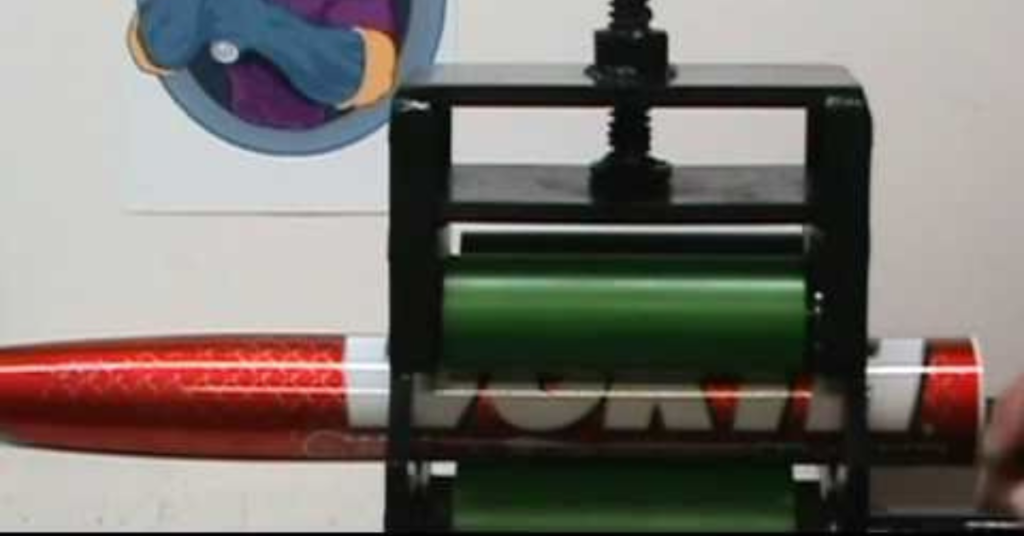In the world of baseball and softball, every player seeks that extra edge to boost their performance. From honing their skills to optimizing their equipment, athletes constantly strive for improvement. One technology that has gained attention in recent years is the bat rolling machine. Promising to enhance a bat’s performance, these machines have sparked curiosity and debate within the sporting community. In this article, we delve into the intricacies of bat rolling machines, exploring how they work, their potential benefits and drawbacks, and the controversies surrounding their use.
Understanding Bat Rolling Machines
What is Bat Rolling?
Bat rolling is a process designed to break in composite bats, primarily used in baseball and softball. Composite bats are constructed using layers of composite materials such as carbon fiber, which are known for their durability and performance-enhancing properties. However, these bats often require a break-in period to reach their full potential. Bat rolling aims to expedite this process by compressing the fibers within the bat’s barrel, effectively loosening them and enhancing the bat’s trampoline effect.
How Do Bat Rolling Machines Work?
Bat rolling machines utilize a combination of pressure and friction to compress the composite fibers of a bat systematically. The bat is placed between two rollers, which apply controlled pressure along its length. As the rollers rotate, the bat undergoes a series of compressions, gradually breaking in the composite fibers. Some machines also incorporate heat into the process, further aiding in the loosening of the fibers.
Types of Bat Rolling Machines
There are several types of bat rolling machines available on the market, ranging from manual to automated models. Manual machines require human intervention to operate, with users manually cranking the rollers to apply pressure. On the other hand, automated machines feature motorized rollers controlled by computerized systems, allowing for precise pressure and speed adjustments. The choice between manual and automated machines often depends on the user’s preferences and budget.
Pros and Cons of Bat Rolling
Pros
Enhanced Performance: The primary benefit of bat rolling is the potential for enhanced performance. By breaking in the composite fibers, bat rolling can increase the bat’s trampoline effect, resulting in greater ball exit speeds and improved distance.
Time Efficiency: Bat rolling accelerates the break-in process, allowing players to unleash the full potential of their bats more quickly. This is particularly advantageous for competitive athletes who require immediate performance gains.
Consistency: Automated bat rolling machines offer consistency in pressure and technique, ensuring uniform results across multiple bats. This consistency is vital for players seeking predictable performance from their equipment.
Cons
Durability Concerns: Critics of bat rolling argue that the process may compromise the long-term durability of the bat. Excessive compression and heat can weaken the composite fibers, potentially leading to premature bat failure or safety hazards.
Manufacturer Warranty Voidance: Many bat manufacturers explicitly state that bat rolling voids their warranty. This poses a significant risk for players who choose to roll their bats, as any damage incurred during the process may not be covered by the manufacturer.
Ethical Considerations: The use of bat rolling machines raises ethical questions within the sporting community. Some argue that artificially enhancing bat performance through rolling gives players an unfair advantage, undermining the spirit of fair play.
Controversies Surrounding Bat Rolling
Legal and Regulatory Issues
The legality of bat rolling varies depending on the governing body of the sport. While some leagues and organizations permit the use of rolled bats, others have banned or restricted their use due to concerns over fairness and safety. As a result, players must familiarize themselves with the rules and regulations of their respective leagues before engaging in bat rolling.
Impact on Fair Play
One of the primary concerns surrounding bat rolling is its potential to disrupt the level playing field. Players who use rolled bats may gain a competitive advantage over those who do not, leading to disparities in performance and outcomes. This raises questions about the integrity of the game and the fairness of competition.
Safety Considerations
In addition to its impact on fairness, bat rolling also raises safety concerns for players and opponents. A bat that has undergone excessive rolling may become more susceptible to cracking or breaking during use, posing a risk of injury to the player or other participants. Furthermore, the increased ball exit speeds associated with rolled bats could pose a danger to pitchers and fielders.
Conclusion
Bat rolling machines offer a tantalizing promise of enhanced performance for baseball and softball players. By accelerating the break-in process of composite bats, these machines claim to unlock the full potential of the equipment, providing players with a competitive edge on the field. However, the use of bat rolling is not without its controversies, from concerns about durability and safety to ethical debates surrounding fair play. As players navigate the complex landscape of equipment optimization, they must weigh the potential benefits of bat rolling against its inherent risks and implications for the integrity of the game. Ultimately, the decision to utilize bat rolling machines lies with individual players and the governing bodies that regulate the sport, shaping the future of baseball and softball equipment technology.







